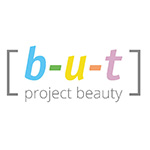Occasionally I do share new developments and findings about Project Beauty on social media like LinkedIn and Facebook, so when Twitter started many years ago I also created an account and tried it out. But soon I made a choice: this was a bridge too far. Given how much I appreciate my offline time, this new channel with which to share a slice of my life was just too much. Even the recent option to look directly into the mind of a US president wasn’t temping enough – no Twitter for me.
But then, about a week ago, a friend forwarded me a tweet from Elon Musk, adding: “Quick, pick up on this!!” And after seven years I actually tweeted again. Elon’s tweet (see above) reads: “define … beauty”. It looked like Mr. Musk was ‘asking’ for a universally valid description of this wonderful but often also rather complicated concept ‘beauty’.
“Define … beauty”
There are a number of phrases that describe what it means to define something; one of them (Cambridge Dictionary) states, “to explain and describe the meaning and exact limits of something.” An effort to define something is often aimed at preventing confusion. By drafting some sort of fixed ‘authorized’ description that holds true for as many persons as possible, we then accept it as a truth. It seems Elon was looking for the truth about beauty.
Truth is one of three core concepts coined by the ancient Greek philosophers and known as ‘the Transcendentals’. The other ones are Justice and Beauty. It is almost like, by distinguishing this trio of phenomena, the classical scholars tried to describe three deeply complex and at the same time fundamentally different experiences. Like three dimensions of looking at the world.
Asking for the truth about beauty is a bit like looking at one dimension through the eyes of another. To compare it to our three-dimensional world, it’s like asking: ‘What is the depth of the height?’ It just doesn’t make sense. The terms belong to different universes.
The urge to find a common denominator in different dimensions is of course very human: our brains are structured to comprehend things, trying as much as we can to create unity out of diversity. However, a brain is just a brain, and not a heart, so its function is limited. Brains are needed for truths, not for beauty: they can understand emotions, but not experience them. And here Elon’s error kicks in. He was trying to look at beauty through the eyes of his brain. Definitely an interesting exercise, but not an easy one.
“Lies can be beautiful.”
So, in essence, different dimensions are not comparable because they are deeply different. But can they collide? Well, yes: in a three-dimensional model all axes may have the value of zero: they meet at the ultimate starting point. The same thing could be argued for the transcendental dimensions of Truth, Justice and Beauty. John Keats had a moment like this in mind when he wrote, “Beauty is truth, truth is beauty.” When someone actually used this quote to reply to Elon’s original tweet, Elon commented with, “Lies can be beautiful.’ It would of course be interesting to learn what lie he had in mind, but his comment mainly proves a unison of Beauty and Truth is not so usual.
A meeting of all three Transcendentals, Truth, Beauty and Justice, in the same moment is probably even more unique. Maybe this instance cannot be described with words sufficiently, but only with a sound. Maybe the ‘Om’ chant in yoga? The sound seems to have a magnetic power …
Finally, and this intrigued me, notice how Elon wrote his tweet: ‘define … beauty’. Why the dots … ? Hesitance? Doubt? Irritancy? Contemplation? Was he trying to make a point? If you linger for a moment on these three small mysterious black marks, you may see something more. Perhaps Beauty?
==============================
Additional information
- A short video about how it all started: A Beautiful Journey
- More info about Project Beauty is available on the website.
- The questionnaire that is at the heart of the project can be found here. (US version)
- Stay updated on Project Beauty: follow us on Facebook.
- So far the core survey of Project Beauty has been used for national representative surveys in five European countries, the USA and Peru. Project Beauty now covers data about perceptions of beauty of over half a billion people worldwide.
- Recently we also started offering an in-company version of this inspiring project. In case you are interested to learn more about applying Project Beauty within your organisation: please contact us.
- Project Beauty was made possible by the generous support of various research agencies: @Dynata, @Blauw Research, @PanelBase @Datum Internacional) and numerous wonderful individuals.
- To support Project Beauty you can purchase your country version (e-)book from the Seeking Beauty series.
- Please contact us in case you are interested in a branded version of these books as a special value-based corporate gift.

Leave a Reply
You must be logged in to post a comment.